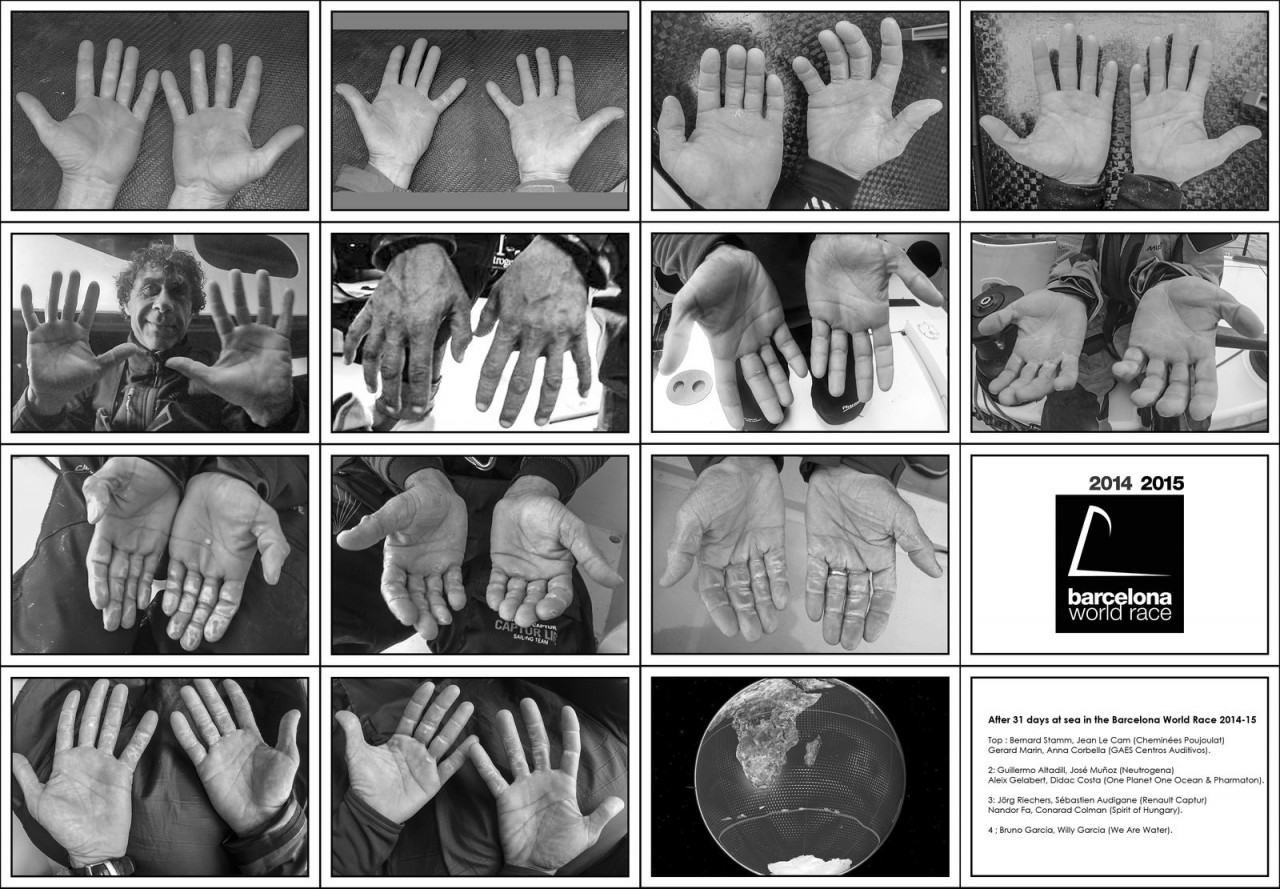A month in the ocean

The Barcelona World Race skippers have been racing for one month, and the toll of covering nearly 10,000 miles is beginning to show on the faces of the 14 skippers. The seven partnerships – some lifelong, others hurriedly formed – have developed as each team finds their own rhythm of living and sailing together.
Each has been tested, but each spoke of their appreciation of life at sea. The competition remains intense, with just over 200 miles between the two leading boats, and 150 miles separating third and fourth.
Former Barcelona World Race competitor Jérémie Beyou (who sailed in the first edition with Sydney Gavignet, until being dismasted in the Indian Ocean) commented: “The race at the front is very intensive, very interesting. We see two ways of sailing. Guillermo is from the same school as Alex Thomson, aggressive, constantly attacking. Cheminées is smoother. I think I recognise Jean’s hand in their style of navigation.
“The crew of GAES Centros Auditivos are also having a good race. Guys like Jean, Bernard and Guillermo know exactly when you need to be 110% and when we can ease back a l ittle. In the end, it makes the difference.”
Aggressive merger?
For the leaders, Cheminées Poujoulat and Neutrogena, the Indian Ocean may be about to lay down its biggest challenge yet, with two merged tropical cyclones due to cross their path over the course of this evening and tomorrow, as the low pressure system tracks south.
The leaders have, uncharacteristically, backed off – reducing sail area (three reefs for Cheminées Poujoulat), reducing pace and putting nearly 200 miles between themselves and the Antarctic Exclusion Zone. All will be monitoring the system’s progression closely. At its most severe it has potential to bring 55-knot winds and 6-8m seas, or it may track south more rapidly, with the leaders avoiding the most severe conditions — on Monday afternoon both were sailing in around 25-knot south-westerlies.
Third time lucky
For third placed Anna Corbella and Gerard Marin, fortune may be turning. GAES Centros Auditivos has been caught in a high pressure system for four days – Anna commenting today that she felt as if it had trapped her three times – but is this afternoon back up to nearly 14 knots of boat speed. Equally importantly for them, Renault Captur, who has closed to 150 miles of the third boat, now sees their speeds dropping to 10 knot paces as they in turn begin to feel the effects of the high.
Elsewhere in the fleet, there was an appreciation of the simple things in life. Conrad Colman on Spirit of Hungary joked: “We’ve got a crisis on board and it is that all of our socks are wet, and so we need to run the engine to make some heat so we can do some laundry and dry our socks! But considering that that’s the biggest problem that we have at the moment, life is pretty good.”
Jean Le Cam also commented: “We're eating well, sleeping well, with no particular concerns, that's life ... fortunately, because we still have two months more ahead. We’ve got gas and water, we can keep warm and eat, so we’ve got no worries.”
Aleix Gelabert was also in reflective mood on One Planet One Ocean and Pharmaton, writing today: “With all the respect that it deserves, being very aware that we are sailing in the Indian Ocean, we will continue sailing in the best possible way and enjoying the maximum out of every single moment of this incredible Barcelona World Race.”
Top and low speeds
One month into the race, and the record for fastest in fleet goes to leaders Cheminées Poujoulat, averaging 18.5 knots over a 24-hour period in the South Atlantic, and sharing the honours over a four-hourly period with the now retired Hugo Boss, at a 20-knot average pace.
Spirit of Hungary suffered the slowest four-hour period in the Mediterranean, averaging just 0.9 knots, with the sam e average achieved between two points by GAES Centros Auditivos in the Indian Ocean and One Planet One Ocean in the Doldrums.
See all skippers quotes on: www.imocaoceanmasters.com
Teams info
Damage on Holcim-PRB
Whilst sailing in 5th position in The Transat CIC fleet, Nicolas Lunven, skipper of the IMOCA Holcim-PRB, informed his shore team at 10h HF this Wednesday morning that his bowsprit had broken. The damage occurred during …
•••